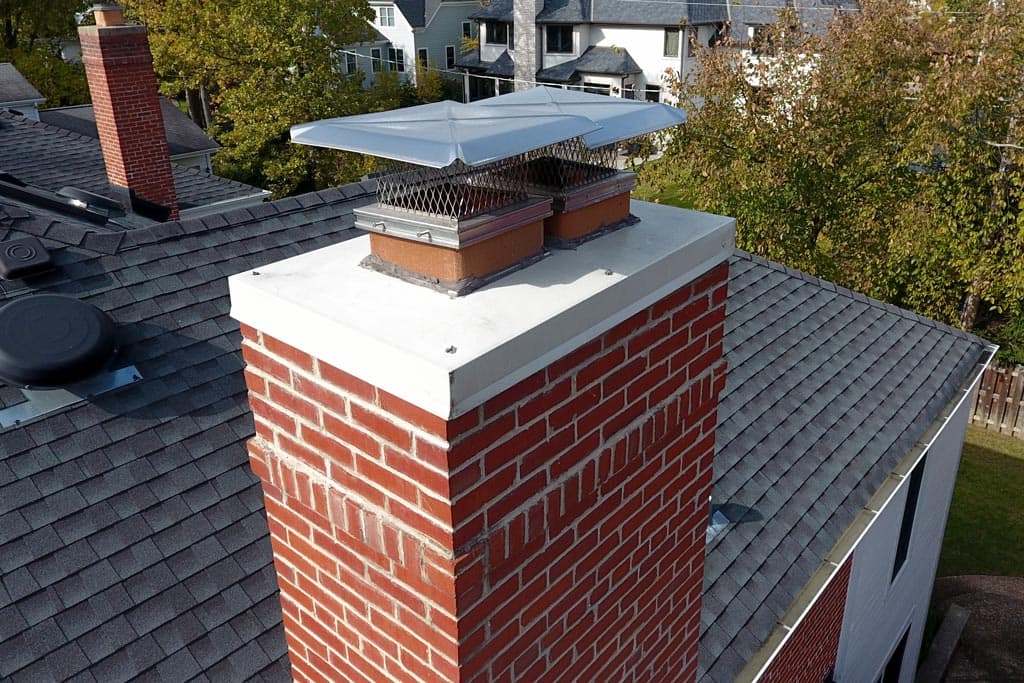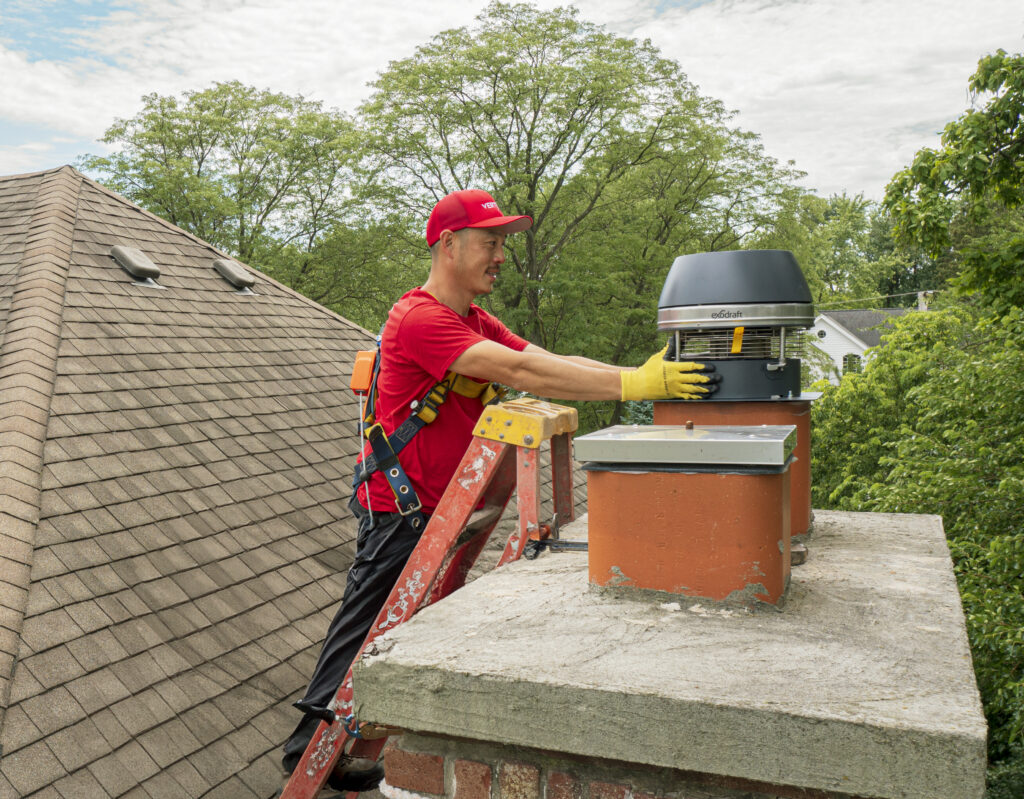
The chimney is composed of many parts and isn't the monolithic structure that people make it out to be. Everything from the mantle, flue liner, chimney cap, flashing, and many other parts make up the chimney.
One of the most underrated of these is the chimney crown - this piece of the chimney is located on top of the stack just under the cap. There are many advantages to having this crown in good working order and is often related to protection from the elements, specifically water.
A malfunctioning chimney crown can cause considerable headache, damage and can even be life-threatening in the most severe cases.
A Chimney Crown’s Job
The chimney crown helps prevent water from getting into the stack. It does this by sealing and covering the top of the chimney around the edge of the top opening. On a typical chimney, this is found between the brick and mortar portion and the flue liner.
Protection of the flue liner is probably the crown's most important job as this is the inner portion of the stack and thus receives the brunt of the wear and tear of the crown. Think of the crown as the second in defense against the rain, sleet and snow - just behind the cap itself.
A well-constructed crown should overhang a minimum of 2 inches over the stack to allow water to drip away from the stack. The center of the crown should be several inches and slope downward to no less than 3 inches thick.
Each crown needs to be custom made for the chimney. Many chimney builders use leftover mortar to make it, resulting in a shoddy afterthought that will be prone to cracking.
Additional waterproofing can be added to reduce deterioration of the crown. This is important because the crown receives significant abuse throughout the year.
The winter brings plummeting temperatures and ice that can crack or chip it over time. A crown that is not properly maintained can face additional damage during the colder seasons. Water can enter the cracks and then refreeze, expanding throughout and making it a nightmare to repair.
Ideally, a chimney crown should be made of either concrete or steel. These are the least porous materials and thus gives the highest amount of water resistance. Overall, the primary job of a chimney crown is to prevent water from getting inside the chimney and surrounding area. Crown damage can lead to significant water damage.
Chimney Crowns Help Fight Water Damage

A chimney crown that's not properly constructed or hasn't been properly maintained can cause significant problems for homeowners in the form of water damage. Water damage is often seen on the exterior - with cracks, chips and spalling being common observations.
Spalling is when water has deeply penetrated the brick and then freezes, causing everything to be pushed around and undermining the overall structure of the stack. An out of control cycle occurs with more water penetrating your chimney, freezing, and further pushing it apart.
In extreme circumstances, entire bricks can become loose causing a collapse of the stack. When damage around the interior of the crown has occurred, water can be found wiggling its way around the flue liner.
Water penetration of a clay liner, the most common residential liner, will cause cracks. Enough damage to the liner can cause pieces to fall off, letting embers, sparks and smoke to penetrate to the outer layers.
In a liner that's heavily coated in creosote, water can mix with it creating a toxic slush that leaks into your home. Water damage to the liner can cause carbon dioxide to leak into your home itself - an extremely nasty prospect as carbon poisoning is often completely odorless and is usually mistaken for the flu.
Other forms of water damage are what one would normally find in a typical roof leak. This includes brown spots in the ceiling and walls, peeling wallpaper and the appearance of mold. Most often, the water damage is coming from your chimney. You’ll first notice these problems around the fireplace and stack. If the crown is the issue and you get it repaired by a professional, you still might have other issues as the crown isn’t the only weak spot in your chimney.
Other Chimney Weak Spots

When it comes to water damage, the crown might be the least of your worries, as it is far from the only weak spot. The first layer of protection in a chimney is the cap itself. These inexpensive parts are an important preventative measure and the reason is obvious.
Instead of having just a hole that faces upwards to the outside world, a cap covers this, allowing the smoke to flow out of the sides of it. These caps will also prevent any critters like birds or squirrels from nesting inside the chimney during the autumn months.
Damage to this cap can cause water to just flow right into the chimney, making the crown fairly useless. As mentioned before, crown damage often leads to further chimney problems, many of which result in additional leakage.
Mortar joints that have been eroded can let more water in. Proper mortar joints should have no gaps, cracks or missing pieces. Even mortar without any obvious defects often becomes more porous with time. This is a result of liquid slowly rubbing away the outer layer, destroying any protection it may have once had.
Below the mortar joints and brick is the roof itself, which will have a weak point in the form of flashing. This small thin strip of metal is used between the roofing material and chimney to act as a seal.
Even a properly functioning flashing can have issues in the face of damage to the crown. The fact is that flashing isn't impervious to an onslaught of water and when a crown isn't doing its job by preventing water from touching the exterior of the stack, then leakage will invariably occur.
Get Yourself a Chimney Crown
The primary purpose of a chimney crown is to prevent water from getting inside the stack along with making sure water stay away from the exterior. It does this by creating a sloped lip that extends from several inches inward to a few inches on the outside.
Used in conjunction with a cap, it helps slope water away from the chimney. An improperly functioning crown can undermine the brick and mortar exterior, flue liner inside, and cause numerous issues throughout your home.
Even when a crown is repaired or rebuilt correctly, it may lead to other secondary issues like cap damage, cracks in the brick, and damage to the flashing.
If you find yourself with a damaged crown or notice other damages in your that could be caused by your chimney, you can trust Vertical Chimney Care to come and inspect the area and give you the correct course of action to take to repair. After all, we are Chicagoland's most trusted chimney service - contact us today and get your chimney back to working properly.
